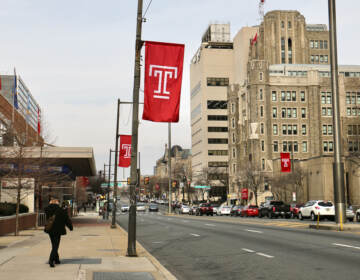Pew study compares Pa. charters with schools in other states
 Photo via ShutterStock) " title="shutterstock_46751629" width="1" height="1"/>
Photo via ShutterStock) " title="shutterstock_46751629" width="1" height="1"/>
(Photo via ShutterStock)
Charter schools are a hotly debated public education option in the Keystone State, particularly in the Philadelphia area, where one out of three public school students attend charters.
A new report from Pew Charitable Trusts looks at how charter schools are governed in Philadelphia and Pennsylvania, then compares it with charter operations in 15 other states having at least one major urban school district with a substantial number of charter school students.
More than half of Pennsylvania’s brick-and-mortar charters are located within the School District of Philadelphia, making its charter school population — more than 60,000 students — the nation’s third largest behind districts in Los Angeles and New York.
“Generally what we found is that the way charters are authorized, regulated, renewed and shut down in Pennsylvania is similar to that of other states,” said Larry Eichel, Pew’s director of Philadelphia research initiatives.
Pennsylvania’s approach to charter school regulation is similar to others, Eichel said, but it has some notable differences.
The commonwealth has a high number of charter students enrolled in cybercharters.
“There has been a lot of conversation about cybercharters in Pennsylvania. We did find Pennsylvania, from a statistical standpoint anyway, is a leader in the cybercharter movement,” he said. “In 2014-15, Pennsylvania had 28 percent of its charter school students enrolled in cybercharters, which is the second highest percentage in the nation behind Ohio.”
Cybercharters have come under scrutiny in Pennsylvania for performance scores that are below the state minimum and the fact that they receive the same per-student funding as brick-and mortar charters.
Another key difference is Pennsylvania’s rate of opening and closing charters.
“We were struck by the fact that Pennsylvania has been among states least likely to open or close charter schools during the period we looked at,” Eichel said. “Pennsylvania, on average, closed 1.3 percent of the charters that were operating in the state per year and the median for the states was 3.4 [percent].”
Closing a charter in Pennsylvania is a laborious process that can take several years and can include appealing to the state’s Charter Schools Appeals Board.
Pennsylvania’s average rate for opening charters is 7.5 percent. During the period the report looked at charter opening rates, 2010-2014, the School District of Philadelphia — which has more than half of the state’s charters — held a moratorium on new charter school applications.
The report also noted charters in most states, including Pennsylvania, receive blanket waivers from the rules governing public schools. A high percentage of noncertified teachers — up to 25 percent of a charter’s staff –is permitted in Pennsylvania. That’s a much higher percentage than other states allow. Half the states studied require teacher certifications.
The authority to create brick-and-mortar charters in Pennsylvania lies with the governing body of local districts, such as Philadelphia’s School Reform Commission. Similar processes exist in five other states studied. In two states, only the state education department could create charters, while the remaining eight states had multiple entities at the local and state level that could authorize charters.
Traditional public school advocates favor limiting power to authorize charters to local districts because they argue a state governing body is disconnected from school districts and districts’ finances.
Cybercharters in Pennsylvania, on the other hand, must be approved by the state Department of Education.
WHYY is your source for fact-based, in-depth journalism and information. As a nonprofit organization, we rely on financial support from readers like you. Please give today.




